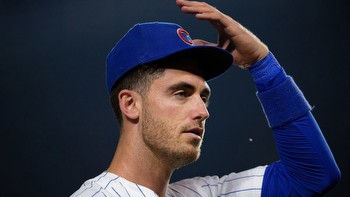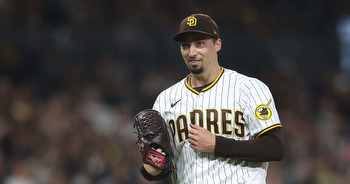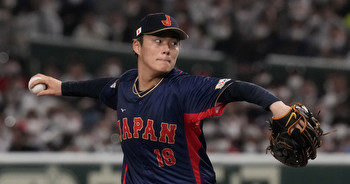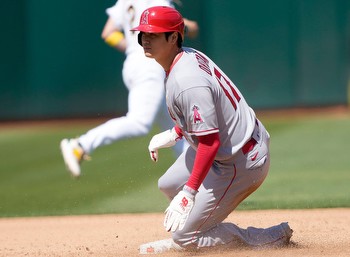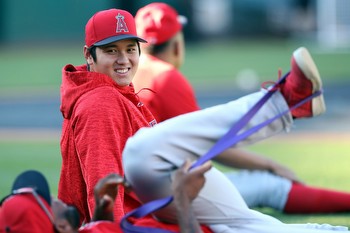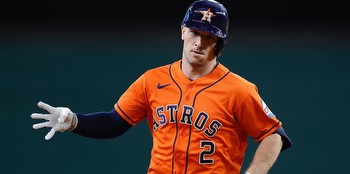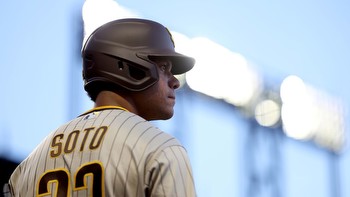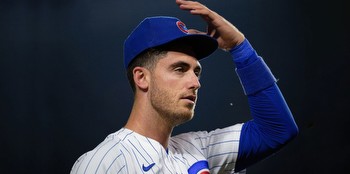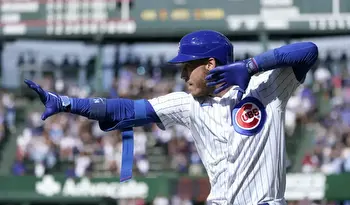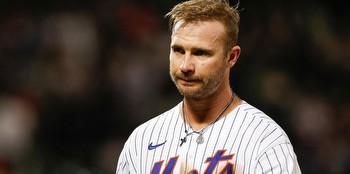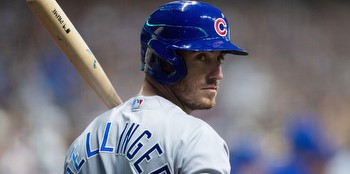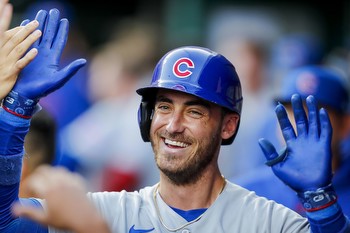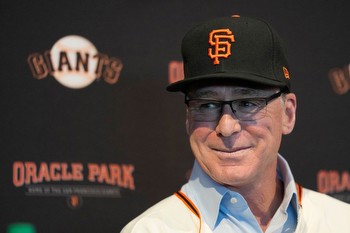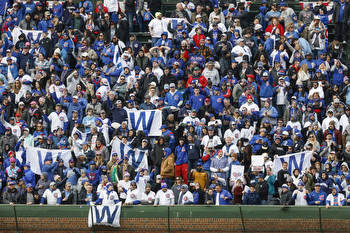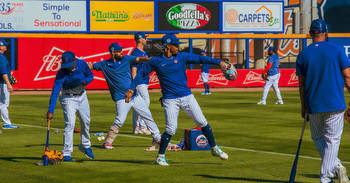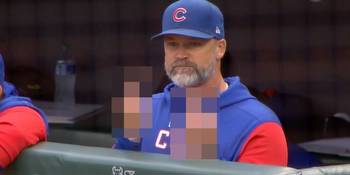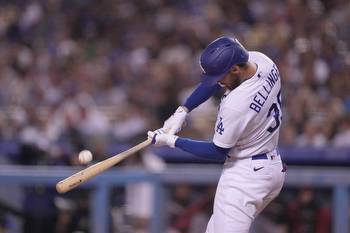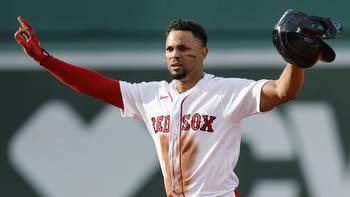Cubs mailbag: Payroll talk, Shohei Ohtani rumors, how a Cody Bellinger reunion could occur
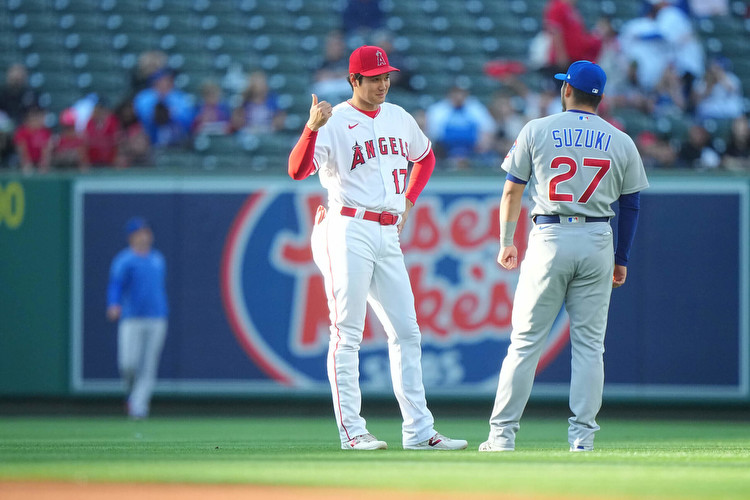
Maybe it’s the holiday season or just the fact there are no games being played, but the messages received for this mailbag are decidedly more positive — or at least less angry — than they were during the season. All those close, tense games really ramped up the fans. David Ross’ managing was a hot-button topic, and falling just short of the playoffs seemed to turn up the negativity.
But now it’s the winter. Fans see the Chicago Cubs mentioned in nearly every big trade and free-agent rumor. Of course there’s optimism! Which just means that when we do this again a month from now and every dream scenario isn’t fulfilled, the vitriol will really come out.
Anyway, with less ranting about what’s wrong and more of a focus on what the Cubs might do over the next few months, there were a lot of great questions.
As always, questions are edited for clarity/length. Let’s get started.
What is the salary situation for the Cubs? How much space do they have under the various thresholds and how likely are they to exceed those thresholds? — William H.
Let’s set the groundwork for the following questions by answering this one. According to Roster Resource, the Cubs have an estimated payroll of $178,255,000. But that number isn’t as important as their estimated luxury tax payroll of $185,907,381. The first luxury tax threshold in 2024 will be $237 million.
Over the years, the Cubs have been very careful about avoiding questions on payroll and how high they’ll go. So what follows is largely speculation based on an understanding of how the front office views this team and when they see a window of contention opening. (Yes, it’d be great if they just spent with zero budget in mind, but that’s not how they’ll operate, so that’s not how it’ll be looked at here.)
If the goal is to stay under that first threshold for the year and have a cushion for additions at the deadline, that gives them about $41 million in luxury tax dollars to spend for the upcoming season. But why would they want to stay under? If the argument not to add relief pitching last summer was to avoid going over the luxury tax threshold, that only matters in a significant way if you’re planning to go over this year. It’s less about going over once and more about the baseball penalties incurred if a team is repeatedly going over the thresholds.
There’s also a lot of money coming off the books once again after the 2024 season and the expectation of many talented (and cheap!) prospects coming up over the next two seasons. So it makes sense to go over this year. How far they go over is the question. Because it isn’t worth going over only a little bit. It makes sense to go over by quite a bit and maybe even approach the second threshold ($257 million).
One caveat is the fact the financial penalties get more aggressive when a team goes over in consecutive seasons, especially after a third straight year. Owner Tom Ricketts has acknowledged the team will want to reset the tax every few years to avoid constantly paying those penalties. Outside of Dansby Swanson, the core of this team is under contract for another three years. That gives them one clear window of competition with the hope more comes after that through the emergence of young players as the new group to build around.
“If we see an opportunity or it’s the right time to go over (the competitive balance tax) for a year or two, we’ll have the ability to do that,” Ricketts said in spring. “But we’ll manage that year to year.”
If all goes right, at some point this team will go over the threshold over the next few years. How often it does it and when that starts is the only question. But that clock should begin now, allowing Hoyer to be as aggressive as he chooses this winter.
Curious why it sounds like Cody Bellinger returning to the Cubs is completely out of the question? Seems like he would be a great fit given the big gap they’ve had for years at first base. He provides the offense AND defense they are looking for. — Monica D.
The situation with Bellinger hasn’t changed since September. Bellinger enjoyed his time in Chicago and would love for it to continue. The feeling is mutual from the Cubs. But the reality is Bellinger took a one-year deal for a reason. He wanted to build back his value with a strong season and hit the open market as one of the prime free agents available. He’s accomplished that. So now he’s going to let his agent, Scott Boras, get to work.
Boras is going to look for the biggest deal possible. The Cubs are very unlikely to meet those initial demands. So with that in mind, the odds have always been against a return to the Cubs. But that’s if he signs a deal in the next few weeks. What if this drags on and Boras doesn’t find a team willing to meet his initial price? Then perhaps a return to the Cubs on a contract Hoyer finds much more to his liking becomes possible — assuming they haven’t already had a massive spending spree.
People keep saying a return to the Cubs is unlikely because Boras almost always manages to find his players the type of deals they’re seeking. But weirder things have happened. A reunion is not completely out of the question, but most people in the industry expect Boras to get what he wants. That’s usually how it works out.
Realistically, are we really gonna get Shohei? I just don’t see us signing him, and even less so with Bellinger. — Steve D.
That’s the $500 million-plus question. My tendency is always to lean “no” on the binary question of whether the Cubs will get a big-time free agent. Unless there is just so much smoke that it becomes obvious, the odds are in my favor when I do that!
The Cubs are a major player for Ohtani’s services. There’s very little information on the details of what Ohtani is looking for, in terms of a contract, a new team and a new city. So it’s hard to know how good the Cubs’ chances are.
What we know is Hoyer likes to keep things quiet as far as whom he pursues and how aggressive he’ll be. We’ve seen him lean toward valuing defense and more well-rounded players, but Ohtani is an exception here. Besides, if he pitches again, that works out to be a pretty well-rounded player.
Hoyer is willing to be creative with contracts, too. He prefers shorter deals and higher AAVs, but again, there’s no clear indication of what Ohtani is seeking from a team beyond the contract. A couple of weeks ago I wrote there was an expectation they’ll be in the mix but likely will get outbid in the end. I’m not sure that’s the case anymore.
I’m not suggesting the Cubs end up with Ohtani. But I don’t get the feeling this is solely about going to the highest bidder. Ohtani holds all the power. He can dictate where he wants to go. That’s not to say the team he chooses might be getting a discount — whoever lands Ohtani will be signing him to the biggest deal we’ve ever seen — just that this is a free-agency scenario in which there is more at play than money. Ultimately, the Cubs are in a limited group of contenders for his services, and if Ohtani decides that’s where he wants to be, the Cubs will be giving him a pretty hefty contract to make it happen.
The Cubs have so many holes to fill. Is it more likely that they will wait and see if they can snag a big-time free agent like Ohtani and/or Bellinger, or will they start addressing other needs while also pursuing that marquee player (or players)? — Matt P.
As much as I want Ohtani, I would rather take that 50-60 mill a year and give it to 2 or 3 players. Is there any chance they do that instead?! — Jerry D.
Pursuing Ohtani is very different from pursuing Bellinger. As addressed above, bringing back Bellinger would happen much later in the offseason and be more of a “cherry on top” to a strong offseason rather than the first step in building this team into a contender again. The Ohtani pursuit is likely coming to an end soon. The Cubs have to be able to juggle multiple things at once here.
Agents are going to want the Cubs in on their clients. So if the Cubs are telling agents they’ll pivot to their player should Ohtani go elsewhere, it probably would be wise for those agents to wait. That’s how it often works. Agents know that one player signing could mean more interest in their client. And Ohtani’s free agency isn’t expected to linger.
Does it make sense to invest all that money in Ohtani when it could go elsewhere? Perhaps, from purely a baseball perspective (the business implications of adding Ohtani are pretty significant and can’t be measured against any other player) it does make sense to spread the wealth around. There are ways the Cubs can have a home run offseason that doesn’t include adding Ohtani.
I guess it comes down to what the goal is. If Hoyer views Ohtani as a key piece to both 2024 and the future, he should be aggressive in trying to add him. Yes, it likely keeps the Cubs from making certain additions, but it wouldn’t be their only move. They’d be able to still fill multiple holes on the roster beyond just adding Ohtani. To what extent is the question, but at minimum, there are plenty of one-year deals to be had via free agency and trade that would strengthen the group.
Do that and try to win next year with Ohtani as the key to the offense. If he pitches in 2025, that’s like adding another free agent and there should be money to spend once again. Roster Resource has the Cubs’ luxury tax payroll at just under $113 million for 2025. Let’s go to the extreme and say Ohtani’s contract has an AAV of $60 million. Even in that case, the Cubs’ CBT number for 2025 would be below where it sits now. The concept of an Ohtani contract being too restrictive is when we get into the territory of giving too much leeway to owners. If you add Ohtani, the organization is making money from so many different revenue streams that spending more on top of it should be a no-brainer.
Odds the Cubs sign Shohei Ohtani and Yoshinobu Yamamoto or Shota Imanaga? Trade Christopher Morel for Tyler Glasnow? — Monte J.
Let’s finish off the mailbag with this one as a more specific continuation of the last answer. If the Cubs add Ohtani, could they add one of the three pitchers mentioned above? They absolutely could, but will they be willing to push past the first luxury tax threshold and get close to, if not past, the second one? That’s the question we don’t know an answer to just yet. But as said above, what’s the point of adding Ohtani and then just limiting the spending there?
Perhaps the years and money for Yamamoto after signing Ohtani would be too much. But the Cubs are interested in Yamamoto on his own. A potential front-of-the-rotation pitcher who is just 25 is exactly the type of player Hoyer likes to spend on. But he feels like one of the primary players they’d pivot to if they miss on Ohtani.
Imanaga looks the part of a mid-rotation pitcher, and the Cubs would love depth there at minimum. He fits the bill with or without Ohtani and would be more financially palatable for the Cubs if they spend on Ohtani.
Glasnow is the one where there seems to be the most buzz of late. But as far as the Cubs are concerned, nothing has changed too much over the past week. They’re in the conversation, but other teams are as well. As of Saturday afternoon, nothing seemed close to done, certainly not with the Cubs. But that can change with one phone call. From what I understand, it won’t cost very much — relatively speaking as far as his talent level goes — to pry Glasnow away. The Cubs probably view Morel for Glasnow as an overpay because of how many years of control Morel has. The Rays may see him as superfluous as a right-handed hitter without a definite position. Maybe that changes if Tampa Bay trades any bats, but right now a legit starter with more control is their preference as the primary return in a potential Glasnow deal.
I wouldn’t be surprised to see the Cubs engage the Cleveland Guardians for pitching as well — both Shane Bieber and Emmanuel Clase make sense. Whether they can get heavily involved in trade talks with the Milwaukee Brewers (Corbin Burnes) or Chicago White Sox (primarily Dylan Cease) is to be determined.
The bottom line is that if the Cubs add Ohtani, the work doesn’t end there. It would make no sense to spend that type of money and stop there with a roster full of holes. Ohtani would be a huge, unprecedented signing by the Cubs, but it can’t be the only move of the winter. Hoyer knows that. Whether he lands the big fish or not, this is going to be an active offseason for the Cubs as they look to build the team back into a legitimate contender.
(Top photo of Shohei Ohtani and Seiya Suzuki: Erick W. Rasco / Sports Illustrated via Getty Images)

